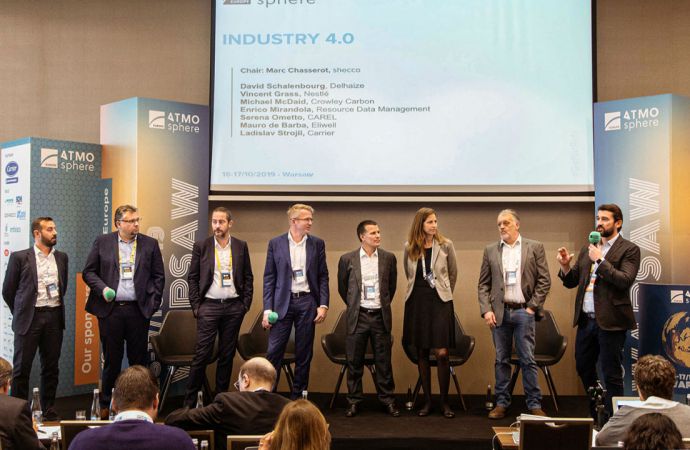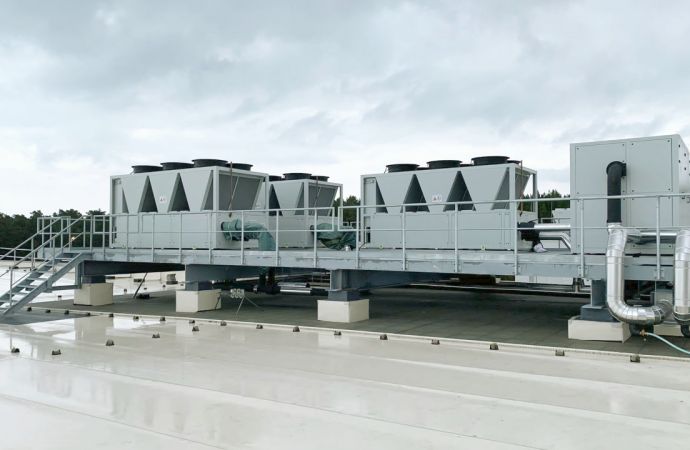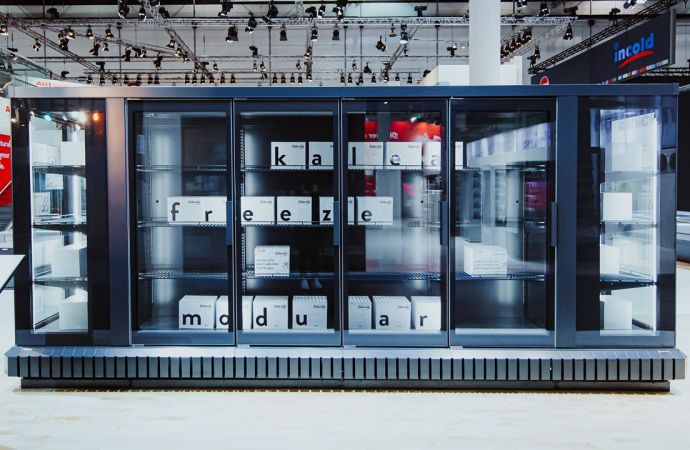End users and manufacturers explain how smart digitization is making cooling systems more efficient and cost effective.

From left: Enrico Mirandola, Resource Data Management; Vincent Grass, Nestlé; David Schalenbourg, Ahold Delhaize; Ladislav Strojil, Carrier; Mauro de Barba, Eliwell; Serena Ometto, Carel; Michael McDaid, Crowley Carbon; and Marc Chasserot, shecco.
Last year, shecco, organizer of ATMOsphere conferences, asked its advisory committee what topics should be addressed at ATMOsphere Europe, held in Warsaw, Poland, in October.
The committee said it wanted to “understand [more about] smart systems, the ones that have all these sensors, all these controls, all this IT and data management and how that helps make our systems more efficient,” said Marc Chasserot, CEO of shecco and publisher of Accelerate Magazine.
This is the technology driving the fourth industrial revolution, or “Industry 4.0,” which is, once again, changing the way we manufacture, store and transport goods. Smart digitization, leveraging artificial intelligence (AI) and the Internet of Things (IoT), is being used to optimize processes, minimize wastage and reduce energy consumption in HVAC&R and many other industries.
The following is a selection of comments made by the members of a panel assembled to analyze Industry 4.0 at ATMOsphere Europe. The panel, moderated by Chasserot, consisted of representatives from end users (Nestlé and Ahold Delhaize), manufacturers (Carrier, Carel, Eliwell and Resource Data Management) and an energy efficiency consultant (Crowley Carbon).
Marc Chasserot: When you approach your customers and tell them “you need to invest in better controls, and better software and data management,” what’s the big reason for doing that?
Vincent Grass, Nestlé: Well, when I go and visit factories, I see a lot of systems that are not operating well, not at their best efficiency, because efficiency is not necessarily sustained.
We don’t have a refrigeration expert in each factory and we don’t have data analytics experts locally. So I think there is huge potential for systems to actually model digital [streams] so that we provide insight for the operator, but in a manner in which the information is useful for the operator – not a specialist.
If you actually quantify this information in cost and energy, then the decision and the action might be totally different. I see an opportunity for us to save some costs [and] reduce energy. I think that this is actually the driving force: to implement changes and to make your systems more efficient.
Michael McDaid, Crowley Carbon: It boils down to efficiency and savings. If technologies are only providing features, they’re not much use. It’s about user experience and asking whether or not we can make money from this. Can we save money on this? Can we deliver huge benefits to the ecosystem and the environment thereafter?
Because, this is what the industrial IoT is really all about for me. It’s all about how data becomes systems of tangible results in business outcomes. Each one of us in this room today has a number we have to hit in production, efficiencies, reductions – the bottom line management for the business.
We have to monetize the data, we’ve got to use that data in a smart fashion. How can we improve throughput by using the data? How can we improve the efficiency of the machines, the life cycle of the machines, and the reliability and placement of the machines?
In one recent case in the U.K., we have identified an almost 15% reduction in energy consumption just by looking at a four-tank process chilling system, and there’s a number to that — it equals £132,000 (US$173,085) of savings in electricity.
Enrico Mirandola, Resource Data Management: It is all about how we present our data, which needs to provide actionable information, for the right people at the right time. In other words, real data in a fast manner.
Ladislav Strojil, Carrier: For us, it is important to distinguish between normal behavior, normal deviations and abnormal deviations.
Marc Chasserot: You could go really cheap with really low data, or you could go super 5G, right?
Mauro de Barba, Eliwell: You’ve got networking and you’ve got wireless that can be upgraded to 5G, but today wireless cabling is what we use. The problem is actually sometimes that client infrastruc- ture is not fast enough. So this limitation is the biggest issue at the moment.
Michael McDaid, Crowley Carbon: Yeah, I think the availability of data and the way to bring that data is to talk of 5G; there are many different ways that we can bring data through, and we are seeing an increase in new technologies today.
But we must have low-cost ways of reaching that data, and getting that data to where we are going to deliver results. In addition, we should not look in the past to predict the future but instead we should deliver value today.
Marc Chasserot: Do you want an open system? You don’t want to be locked into one solution, one type of software, one relationship?
Enrico Mirandola, Resource Data Management: An open system is key. We cannot have just one supplier deliver the data. So, because there are very different data that can be put together, having an open system enables us to put all of it together and make it available for more people in a nice way. That could be remote, like on the Cloud, but not necessarily.
Serena Ometto, Carel: In the past, the trend was really to just take all the data available on the bottom side and transfer it to the Cloud. But again, in terms of sustainability, this is not the most effective solution. So it’s true that, in terms of making an analysis, it’s useful to have the most important information on an enterprise solution.
It is therefore important to design the right [message] to do what is necessary locally and to transform what is really relevant for the deeper analysis. Then for sure, share the information.
David Schalenbourg, Delhaize: Your data can help us avoid food waste and CO2 emissions. So it’s where we have this common goal to reduce losses. But if we can have better follow-up on refrigeration systems, which become more intelligent, and we also have other intelligent equipment entering our stores, it takes a lot of time and IT security.
From the industry, I think you can give a generic answer to all of those food retailers, because we all face the same problem. I always hear, if I’m your customer, you will give me a tailor-made solution. But in fact, you can make a tailor-made solution for the whole food retail sector, and then you end up addressing food waste on a much larger scale.
Marc Chasserot: Food retailers reduce food wastage, but could you have a system that’s used right from the supplier on the farm to your store – and one that is connecting the whole range?
Vincent Grass, Nestlé: We hear and we see the new technologies being used but, to be honest, I’ve been in refrigeration now for 20 years and while I see improvements in efficiency, these are not enough to actually address climate change.
What is happening now — and this is really a call to arms — is that there’s a lot of wastage of energy out there, and this is probably a much bigger opportunity than what we are going to achieve in replacing an old system with a new system that is 5% to 10% more efficient.
If you sell a product, please also work on the model that can be used to sustain performance and actually improve it.
Related stories




